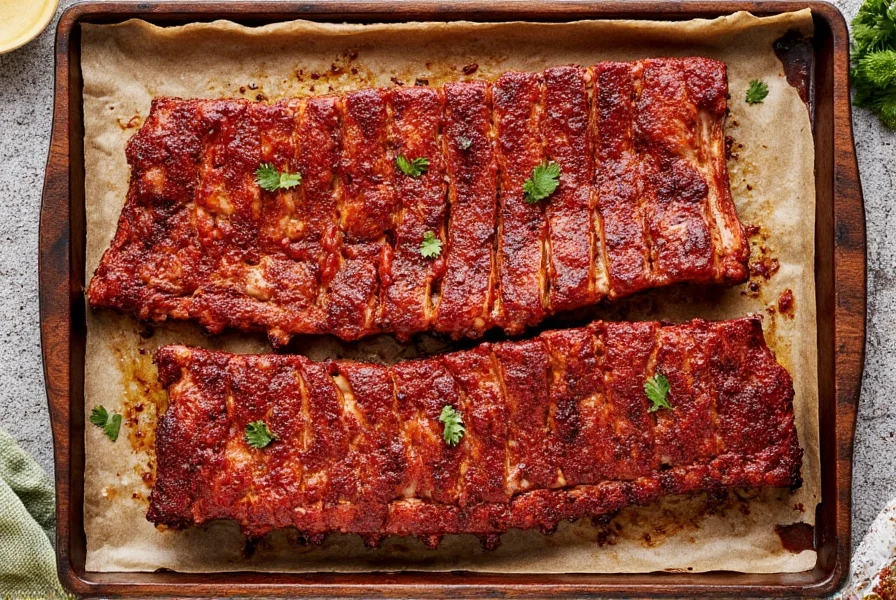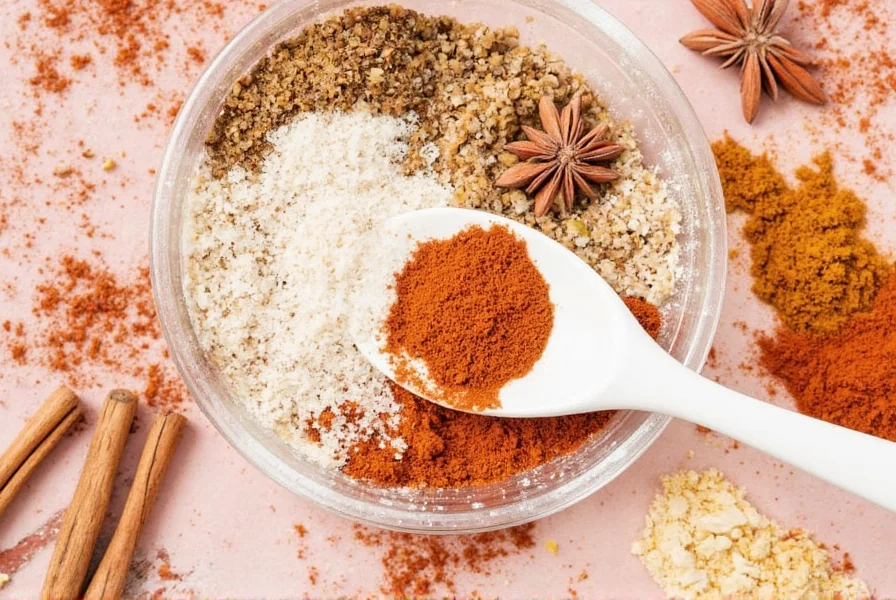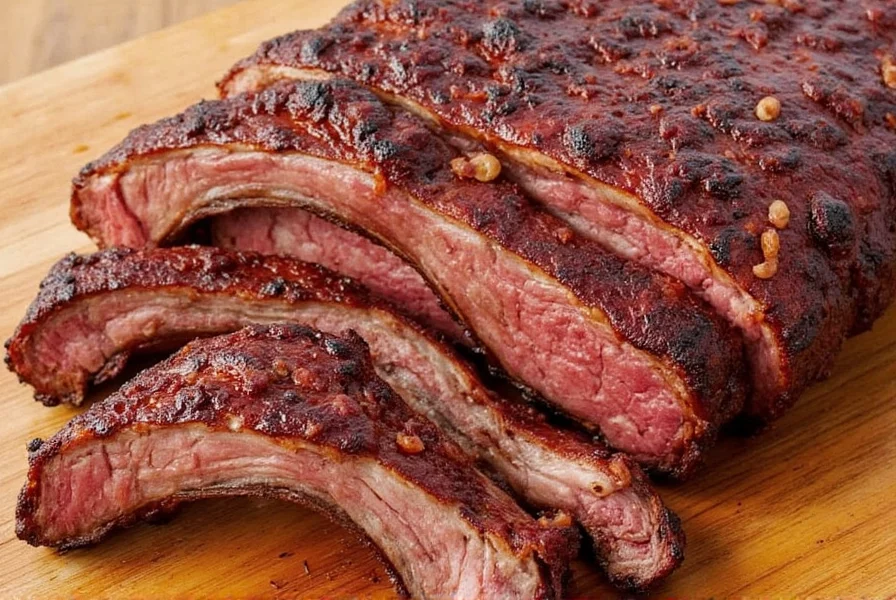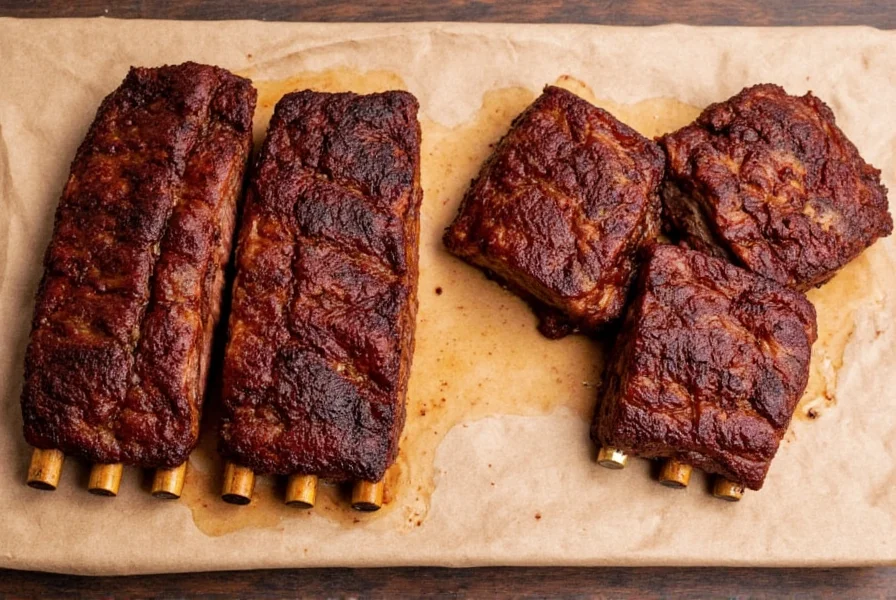Smoky Showdown: Baby Back Ribs vs. Beef Short Ribs – Who Wins the Flavor War?
Whether you're hosting a backyard BBQ or craving that melt-in-your-mouth meaty goodness, the choice between baby back ribs and beef short ribs can be tough. Both are rich in flavor and texture but bring something unique to the table. In this article, we’ll dive deep into what makes each cut special, how to season them like a pro, and when to choose one over the other.
Table of Contents
- What Are Baby Back Ribs?
- What Are Beef Short Ribs?
- Flavor & Texture Differences
- Best Spice Blends for Each Cut
- Cooking Methods Compared
- Buying Guide: How to Choose Quality Ribs
- Frequently Asked Questions
- Conclusion
What Are Baby Back Ribs?

Baby back ribs come from the top of the pig’s ribcage, just below the loin muscle. They’re leaner than spare ribs and have a curved shape. These ribs are known for their tenderness and mild flavor, making them perfect for seasoning with bold spices or glazing with sweet sauces.
Fun fact: Despite the name, baby back ribs aren’t from young pigs—they’re called “baby” because they’re smaller than spare ribs!
Pros of Baby Back Ribs:
- Tender and easy to chew
- Leaner than other rib cuts
- Ideal for grilling or smoking
- Great base for sweet or smoky rubs
What Are Beef Short Ribs?
Beef short ribs come from the lower portion of the cow’s rib cage. They’re meatier than pork ribs and contain more connective tissue, which means they benefit from slow, low-and-slow cooking methods. The result? Fall-off-the-bone tenderness and deeply savory flavors.
If you’re looking for richness and umami, beef short ribs deliver big time. Think Korean kalbi-style grilled short ribs or braised versions served over polenta.
Pros of Beef Short Ribs:
- Rich, beefy flavor profile
- Higher fat content = juicy and tender
- Perfect for braising or slow roasting
- Great for building bold, complex sauces
Flavor & Texture Differences
The biggest difference between baby back ribs and beef short ribs comes down to flavor intensity and mouthfeel. Let’s break it down:
| Aspect | Baby Back Ribs (Pork) | Beef Short Ribs |
|---|---|---|
| Flavor | Mild, slightly sweet | Rich, savory, umami-packed |
| Fat Content | Lower | Higher |
| Cooking Time | 4–6 hours at 225°F | 8–10 hours at 225°F |
| Best For | Grilling, smoking, finger food | Braising, stewing, luxurious mains |
| Serving Style | Dry rubs, BBQ sauce | Glazes, broths, wine reductions |
Best Spice Blends for Each Cut

Because these two cuts have such different flavor profiles, choosing the right spice blend is key to enhancing their natural taste without overpowering it. Here’s how to match your rubs to your ribs:
Pork Baby Back Ribs Rubs:
- Sweet & Smoky Blend: Brown sugar, paprika, garlic powder, onion powder, cayenne, salt
- Carolina Dry Rub: Mustard powder, black pepper, red pepper flakes, celery salt, brown sugar
- Asian-Inspired Rub: Chinese five-spice, ginger powder, sesame oil, chili flake, honey glaze
Beef Short Ribs Rubs:
- Classic Beef Rub: Kosher salt, coarse black pepper, smoked paprika, garlic powder, cumin
- Korean Kalbi Style: Soy sauce, sesame oil, brown sugar, garlic, pear juice, gochugaru
- French-Inspired Braising Mix: Thyme, rosemary, bay leaf, juniper berries, black peppercorns

Cooking Methods Compared
While both cuts shine on the smoker, there are key differences in preparation and execution:
For Baby Back Ribs:
- Remove membrane from bone side
- Apply dry rub and refrigerate overnight
- Smoke at 225°F for 4–5 hours
- Wrap in foil with apple juice and butter
- Finish with direct heat or broil for caramelization
For Beef Short Ribs:
- Trim excess fat if desired
- Rub generously and sear all sides
- Braise in oven at 300°F for 6–8 hours
- Add aromatics like carrots, onions, and red wine
- Shred or serve whole with sauce reduction
Buying Guide: How to Choose Quality Ribs
Selecting the best ribs starts with knowing what to look for. Here's your cheat sheet for picking the best baby back ribs and beef short ribs every time:
What to Look For in Baby Back Ribs:
- Color: Light pinkish-red, not gray
- Fat: A thin layer of marbling is ideal
- Size: Even curvature, no broken bones
- Packaging: No excessive liquid pooling
- Marinade: Avoid pre-marinated unless from a trusted brand
What to Look For in Beef Short Ribs:
- Meat-to-Bone Ratio: At least 2 inches of meat per bone
- Marbling: Visible streaks of white fat through the meat
- Cut: Square-cut preferred for even cooking
- Freshness: Deep red color with minimal browning
- Thickness: Around 2–3 inches thick for best results
Recommended Products:
| Product | Description | Features | Use Case | Audience | Occasion |
|---|---|---|---|---|---|
| Smithfield Premium Baby Back Ribs | Fresh, never frozen, naturally raised pork | Even trimming, consistent size | Weekend grilling, party platters | Home cooks, BBQ hobbyists | Summer cookouts, tailgates |
| Snake River Farms American Style Kobe Beef Short Ribs | Highly marbled, premium quality | Intense flavor, melt-in-mouth texture | Special occasion meals, gourmet dishes | Chefs, steak lovers, foodies | Anniversaries, dinner parties |
| Mother’s Pride Organic Pork Baby Back Ribs | Organic, pasture-raised, antibiotic-free | Natural flavor, sustainable sourcing | Health-focused meals, family dinners | Parents, health-conscious eaters | Everyday dinners, Sunday suppers |
Frequently Asked Questions
Can I substitute baby back ribs with beef ribs?
No exact substitution exists due to differences in texture and flavor. Baby back ribs are more tender and milder, while beef ribs are richer and require longer cooking times.
Which ribs are better for beginners?
Baby back ribs are more forgiving and easier to handle for first-time smokers or grillers. Their shorter cook time also makes them more manageable.
How long should I rest ribs after cooking?
Let baby back ribs rest for 10–15 minutes and beef short ribs for 15–20 minutes to allow juices to redistribute.
Conclusion
So who wins the showdown between baby back ribs and beef short ribs? It really depends on your mood and meal goals. If you want something tender, mildly sweet, and perfect for slapping on some smoky sauce—go pork. But if you're craving depth, richness, and the kind of flavor that builds a story with every bite—beef short ribs are your jam.
Remember: great ribs start with great spices, proper prep, and patience. Whether you're going solo or feeding a crowd, choosing the right cut—and pairing it with the right rub—can turn a simple dish into something legendary.











 浙公网安备
33010002000092号
浙公网安备
33010002000092号 浙B2-20120091-4
浙B2-20120091-4